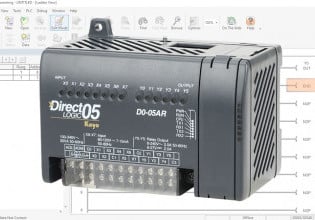Hello every one
I have question about TMR Analoge output 4-20ma voting in MARk6
Control system .
(Analoge input tmr voting, Discrete input/output , analogue out for servo ....its ok for me )
in the figure attached bellow:

the manual speak about send three current . and read the voltage feedback . To select the voted value. ( Hardware voting).
But how can send three current in same time to the load ...(the current will be 3 times .
So can any one have explanation for this?
Regards
I have question about TMR Analoge output 4-20ma voting in MARk6
Control system .
(Analoge input tmr voting, Discrete input/output , analogue out for servo ....its ok for me )
in the figure attached bellow:

the manual speak about send three current . and read the voltage feedback . To select the voted value. ( Hardware voting).
But how can send three current in same time to the load ...(the current will be 3 times .
So can any one have explanation for this?
Regards






